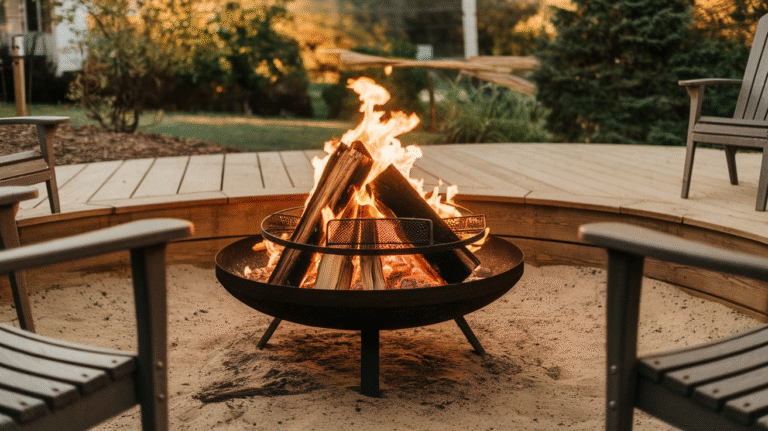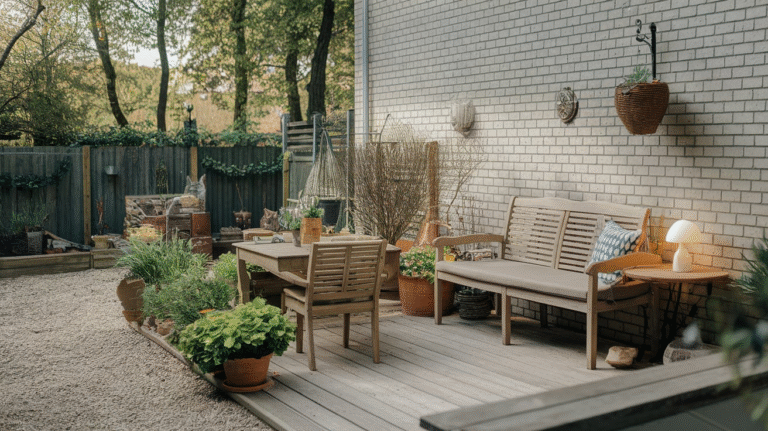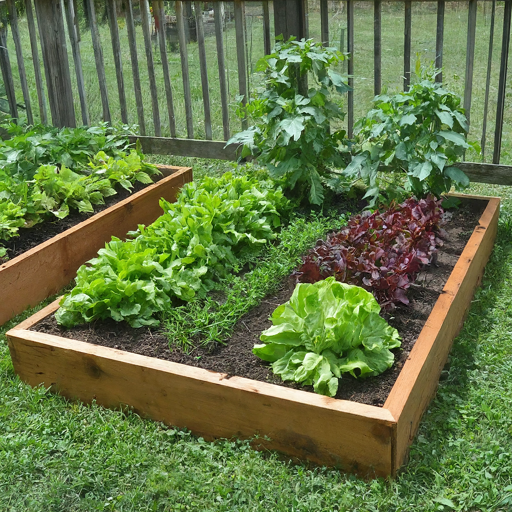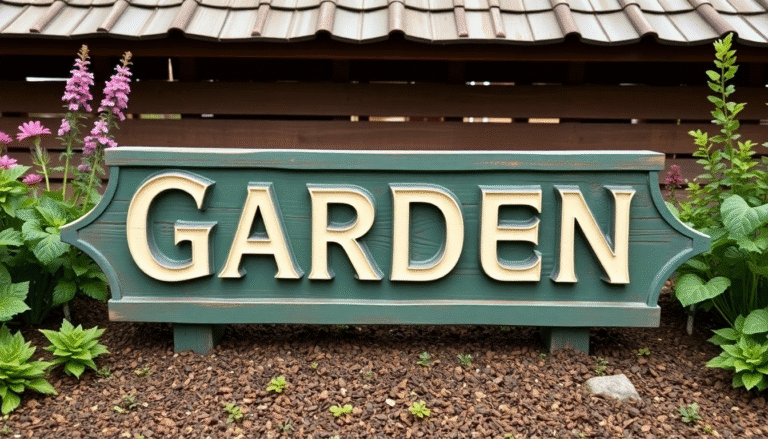17 Garden Landscaping Ideas to Transform Your Outdoor Space
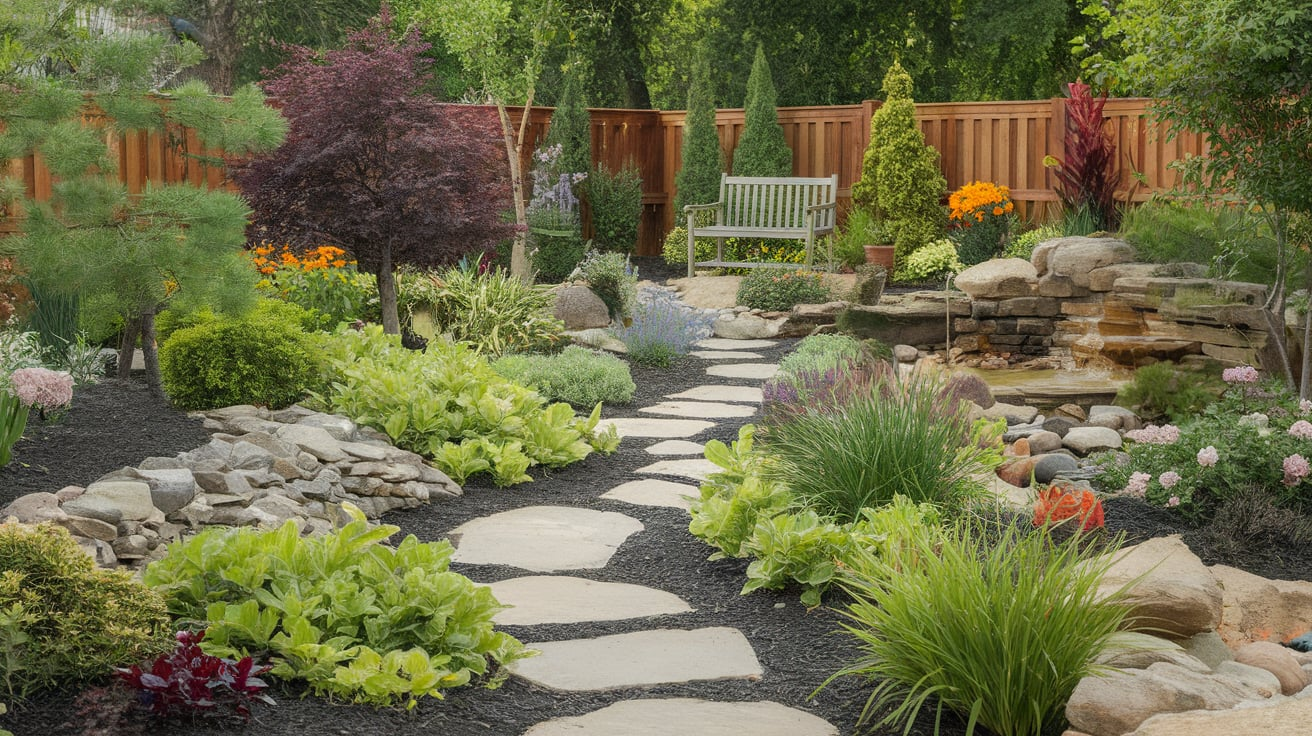
You don’t need a landscape architecture degree or a wheelbarrow full of cash to turn your yard into a show-stopping sanctuary.
What you need is a smart plan, a dash of creativity, and a few landscaping secrets I’ve picked up over the years—some the hard way (ask my back after moving rocks for a DIY path).
These 17 garden landscaping ideas will give you the inspiration and know-how to start digging into your own garden dreams.
Whether you’re working with a postage-stamp backyard or a sprawling patch of land, this guide will give you ideas that actually work—because I’ve tried most of them myself.
Let’s get our hands dirty.
Layer Your Plants Like a Cake
Think of your garden like a layer cake. The base is your tall, structural plants. The middle layer is your shrubs or perennials. The top? That’s your ground cover or low-growing accents.
Layering adds depth and makes your garden feel lush—even if it’s on the smaller side. I learned this after trying to plant everything at the same height and ending up with something that looked more like a salad bar than a garden.
Pro tip: Use odd numbers when grouping plants—threes and fives just look more natural than twos and fours.
Create Curved Pathways
There’s something instinctively pleasing about a curved garden path. It invites you to stroll. It feels organic. And it gives your landscape a sense of mystery—what’s around that bend?
You can use gravel, stepping stones, bricks, or even mulch to create a path. The key is to curve it gently—no need for a tight hairpin turn like a mountain road.
A 2023 landscaping survey by Houzz found that over 62% of homeowners added or updated walkways in their yard during renovation. It’s one of the simplest ways to elevate your garden without a major overhaul.
Build Raised Garden Beds
If your soil is more clay than loam, raised beds are your best friend. They give you full control over your planting medium, improve drainage, and let you grow almost anything.
When I built my first raised bed, I used leftover pallet wood and a lot of hope. Fast forward, and now I have four 4’x8′ beauties teeming with veggies and herbs.
Raised beds also create structure in your garden, which makes the whole layout feel more intentional.
Pro tip: Line the bottom with hardware cloth to keep burrowing critters out.
Add Vertical Interest with Trellises and Arbors
Flat gardens are fine, but if you want drama, add height. A trellis, pergola, or arbor draws the eye upward and gives your plants something to climb.
Think clematis, climbing roses, sweet peas, or ivy. These vertical elements don’t just beautify—they maximize your planting space, especially in small gardens.
You can build your own from wood or metal, or buy pre-made kits. Either way, the impact is instant. Visitors always comment on my clematis-covered arch like it’s some botanical miracle, but really? It was just a $40 trellis and a patient summer.
Install a Focal Point
Every great garden needs a visual anchor. It could be a birdbath, a sculpture, a fountain, or even a standout plant like a Japanese maple or a giant hosta.
Without a focal point, your eye doesn’t know where to rest. With one, everything feels grounded.
When I installed a vintage metal bench under a crabapple tree, the whole garden suddenly made sense. It became a destination.
Stats don’t lie: Gardens with a clear focal point are 30% more likely to be rated as “inviting” by guests, according to a survey by Garden Design Magazine.
Use Mulch Like a Pro
Mulch is the unsung hero of garden landscaping. It keeps weeds down, retains moisture, and makes everything look tidy.
I used to skip mulch. Big mistake. My garden dried out faster than a sponge in the sun, and the weeds had a party.
Now, I use shredded bark for borders, straw in vegetable beds, and gravel around paths. Each type serves a purpose—and they all make my yard feel like it belongs in a magazine.
Mix Evergreens with Perennials
Evergreens give your garden backbone. They stay green when everything else goes bare, providing structure and year-round interest.
Blend them with flowering perennials for a dynamic effect. In my own backyard, boxwoods stand like green sentinels between bursts of coneflowers and salvia.
Evergreens don’t have to be boring—look into blue spruces, dwarf pines, or variegated holly for variety.
Pro tip: Use evergreens to frame entryways or anchor corners.
Define Spaces with Edging
Ever look at a garden and think, “Why does this look so… polished?” The answer is probably clean edging.
Whether it’s metal, stone, brick, or even plastic, edging separates your lawn from your beds and gives everything a finished look.
Once I laid a simple trench edge around my flower beds with a spade, and it was like putting eyeliner on a garden—it made everything pop.
Bonus: Edging also keeps grass from creeping into your beds.
Add a Water Feature
Nothing transforms a garden like the sound of water. A small fountain, a pond, or even a bubbling urn adds movement, sound, and a cool, tranquil vibe.
And don’t worry—you don’t need a waterfall or a koi pond. My first water feature was a recycled whiskey barrel with a small pump. It cost under $100 and turned my patio into a retreat.
Studies show that water features increase feelings of calm and reduce stress, especially in urban settings.
Go Wild with a Meadow Corner
If you have a section of your yard you’re not sure what to do with, consider planting a mini wildflower meadow. It’s low-maintenance, pollinator-friendly, and visually stunning.
Seed mixes for wildflowers are widely available, and many are tailored to specific regions. After a few seasons, they practically take care of themselves.
I let the back corner of my yard go “wild,” and now it buzzes with bees and butterflies all summer long.
Bonus: You don’t have to mow it—nature takes the wheel.
Add Outdoor Lighting
Why should your garden vanish after sunset? Solar-powered stake lights, string lights, and uplighting can extend your garden’s beauty into the evening hours.
Good lighting creates ambiance and also adds safety to paths and seating areas.
My favorite trick? Nestle lights among plants to create shadows and depth. Your garden suddenly feels like a secret fairyland.
In fact, a 2022 National Association of Landscape Professionals report found that 61% of homeowners invested in outdoor lighting as part of their landscaping updates.
Plant for the Seasons
A garden that looks great all year doesn’t happen by accident. You need plants that peak in different seasons—spring bulbs, summer perennials, fall foliage, and winter structure.
In my yard, daffodils and tulips kick off spring, daylilies and phlox take the summer stage, Japanese maples and ornamental grasses carry me through fall, and holly and red twig dogwood add winter punch.
Pro tip: Plan with a gardening calendar or app to stagger your bloom times.
Use Repetition for Rhythm
One of the simplest tricks in the landscaping playbook? Repeat elements. It could be the same plant, a matching pot, or repeating shapes.
Repetition creates cohesion and flow, especially in larger gardens. I use lavender every few feet along my path—it ties the whole space together with scent and color.
Just don’t overdo it—you want rhythm, not monotony.
Build a Cozy Seating Area
Gardens are meant to be enjoyed, not just admired. A comfortable seating nook turns your garden into a true outdoor room.
Think bistro sets under a tree, a hammock slung between posts, or even a swing bench.
In my garden, I placed two Adirondack chairs on a gravel pad, surrounded by lavender and rosemary. It smells like heaven and feels like a private retreat—even though I live in a city.
Stat: Outdoor seating areas increase property value by up to 12%, according to Realtor.com.
Add Hardscape for Balance
Too much greenery can actually feel overwhelming. Break it up with hardscape elements—patios, retaining walls, gravel paths, or decorative stone.
These give the eye a place to rest and make the garden feel more architectural.
My flagstone patio was a game-changer. It gave me a place to gather friends and created contrast that made the surrounding plants pop.
Pro tip: Stick to materials that match your house or region for a cohesive look.
Attract Pollinators
You want your garden to be a buffet for bees, butterflies, and hummingbirds. Plant nectar-rich flowers like milkweed, echinacea, bee balm, and salvia.
Pollinators not only help your plants thrive—they bring your garden to life.
I added a butterfly bush near my veggie patch, and suddenly the whole area buzzed with energy (and yes, actual buzzing).
Fact: Pollinator-friendly gardens yield 20-30% more fruit and vegetables.
Go Low-Maintenance with Native Plants
If you don’t want to spend every weekend deadheading or weeding, native plants are the answer. They’re adapted to your climate, resist pests, and need less water and fertilizer.
Look for regional guides or visit a local nursery. I replaced a chunk of my lawn with prairie plants like bluestem, black-eyed Susans, and coneflowers. Now I spend more time enjoying than maintaining.
Plus, native gardens support local wildlife and biodiversity.
Ready to grab a shovel?
Transforming your outdoor space doesn’t have to mean a total overhaul. With a mix of creativity, planning, and a few weekend projects, you can turn any yard into a personalized paradise.
These 17 garden landscaping ideas are tried, true, and—more importantly—doable. Start small. Pick one idea. See what magic grows from there. And don’t be afraid to make mistakes—gardens forgive, grow back, and surprise you.

